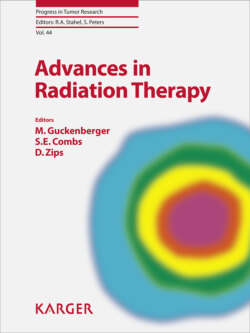Читать книгу Advances in Radiation Therapy - Группа авторов - Страница 37
На сайте Литреса книга снята с продажи.
Counteracting Hypoxia
ОглавлениеWhen imaging is found to indicate a more hypoxic tumor, or establishes which parts of a solid tumor are more hypoxic than other parts, treatment can be personalized by dose modification or “dose painting.” However, hypoxia might be an (additional) target for treatment itself, or may also be countered before or during radiotherapy (hypoxia modification). Hypoxic cells within tumors can be targeted through so-called hypoxia sensitization using bioreductive compounds [24, 25]. Modification imaging of hypoxia could be essential, as hypoxia modification for less hypoxic tumors is not only a futile effort, but might even potentially harm the patient as treatment-related toxicity could increase with hypoxia-targeted therapy [23]. Several different approaches have been used to resensitize hypoxic tumors, especially in anemic patients, such as hyperbaric oxygen treatment, erythropoietin, or red blood cell transfusions. These have been largely unsuccessful, or even counterproductive [26, 27]. A successful hypoxia modification strategy is the breathing of carbogen in combination with nicotinamide, which in combination with accelerated radiotherapy (ARCON) led to an improved regional control in laryngeal cancer patients with hypoxic tumors [28], and particularly in anemic patients [29]. Another successful approach is combining radiotherapy with the oxygen-mimetic nimorazole, which selectively sensitizes hypoxic cells to ionizing radiation by replacing oxygen in the chemical reactions that lead to the production of DNA damage [30]. Imaging patients for a priori selection of hypoxic tumors will be of the utmost importance of determining the effect of hypoxia-modification strategies.
